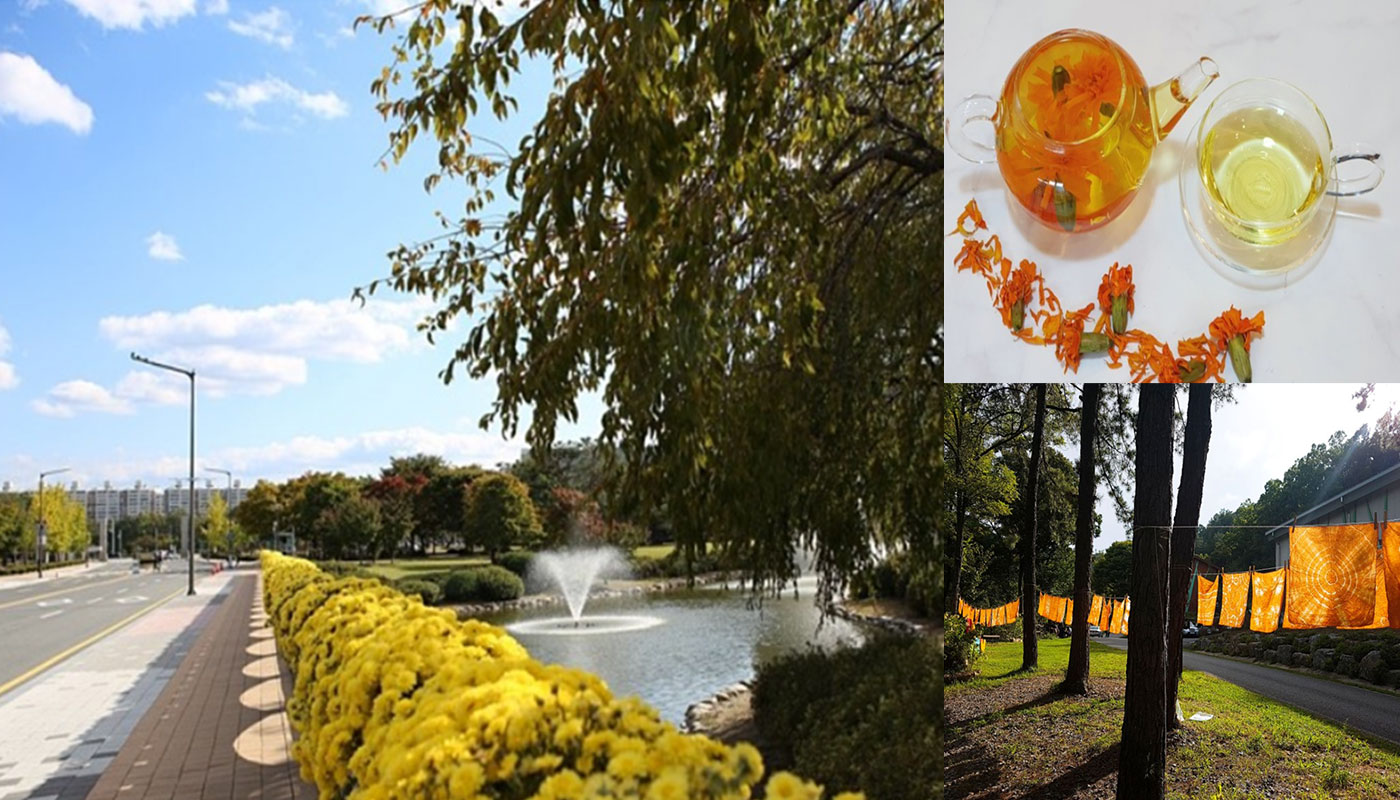'Gujeolpan' Korea’s Elaborate Royal Court Dish

Koreans say that the style of Korea is expressed through the fingertips and that the flavors of Korea are created by the hand, which is described as “son-mat,” literally meaning “hand-taste.” This is especially true in the case of gujeolpan, or a platter of nine delicacies, that presents a variety of flavors created with great care and heartfelt touches. A thinly pan-fried wheat pancake called, mil-jeonbyeong, is served with eight ingredients, such as meat, mushroom and vegetables, to be rolled inside the pancake as filling.
Back in the day, dishware in Korea was mostly made of ceramic or iron, but gujeolpan was served in a wooden ware that has been lacquered (“otchil”) with inlaid mother-of-pearl, which is a tradition that makes the experience of eating this special dish even more delightful.
The eight ingredients are perfectly balanced in terms of nutrients, and they are a feast for the eyes being so colorful, so the dish is often served at celebratory events, such as a wedding. Each ingredient is placed in its own compartment within the dishware, and they can symbolize “people with different wills.” So by wrapping all the ingredients from the different compartments in a single wheat pancake, you are essentially creating “harmony.” This is why gujeolpan was commonly served at gatherings that required harmony, unity and solidarity.
The platter of nine delicacies makes a perfect main dish, but it can also be served as a side dish to be consumed with liquor or as dessert. When served with liquor, the ingredients are usually dried snacks such as dried persimmon, ginkgo, jujubes, and walnuts. As dessert, it usually consists of traditional Korean confectionery such as those served with tea as well as suksilgwa (stewed fruits), and gangjeong (sweet rice puffs).
Gujeolpan can be prepared with all kinds of ingredients depending on the tastes and preferences of those who are invited to enjoy it. But there is one ingredient that it cannot be made without, and it is the love and care of the one who makes it.
'Fair Travel in Daejeon'
Made Possible by Tourists and Local Residents

Staying at luxury hotels, following a tour guide to all the famous tourist attractions, buying souvenirs and other goods to take back home... Consumption is an inseparable part of travel. But things are starting to change.
Traveling is becoming more relationship-oriented rather than consumption-oriented with people seeking to discover joys in slowness and even discomfort. It is through “fair travel” that brings happiness to travelers, local residents and our planet Earth.
Fair travelers either travel on foot or opt for low-carbon transportation modes such as a bicycle and electric vehicle (EV) and stay and eat at businesses run by locals. They avoid using disposables, save water, and follow environmentally friendly practices. Not only that, they genuinely try to learn the history and traditions of the places they visit.
Fair travel is not that difficult, as long as you think about “how” you should travel rather than “where” to go.
Here, we present to you how you can enjoy fair travel in Daejeon to get a glimpse of the lives of locals and truly feel and experience local culture. So how about coming to Daejeon for a chance to grow and mature as a person?
Fair Travel Idea #1: Discover Treasures on the Road in Isa-dong
Isa-dong boasting 500 years of history is a place where life and death coexist, where you can witness both natural environment damaged by indiscriminate development and well-preserved traditional culture, where the traces from the past, including Confucianism and Eunjin Song family clan’s traditions, blend together with modernity, and so on. Turn into a seonbi (classical scholar) and discover the secret behind such awe-inspiring balance and coexistence through various experiences (village school, food, civil service examination, and village tour). You will be pleasantly surprised by what you find in Isa-dong!
Fair Travel Idea #2: Sci-for Rest
Sci-for Rest is a forest healing program recommended to those who have become physically and mentally drained due to the COVID-19 pandemic. Travelers and local residents alike can participate in this program, which presents the unique charms of Daejeon through its gorgeous forests.
Fair Travel Idea #3: Daejeon Yesullo
Daejeon Yesullo (Arts Road) Program presents an opportunity for participants to enjoy exhibitions, plays and various genres of art, and even communicate with artists. So seize this chance to check out the enchanting artworks by local artists and speak with up-and-coming artists. You will be able to make one-of-a-kind eco bag while sipping on tea, watch a play put on by actors whose love for theater is evident, and relieve stress and fill your life with the beauty of the arts.
Fair Travel Idea #4: Healing Experience on Jangtae Mountain
There is a rural village located on the southwestern tip of Daejeon that allows visitors to make traditional rice cakes and create unforgettable memories to the sounds of an acoustic guitar. Walk along the forest trail on Jangtae Mountain that’s lined with metasequoia trees, meditate and heal your body, mind and soul in the forest, and share love through tasty local dishes made with ingredients sourced locally.











 Interview With
Interview With
 Medical Technology
Medical Technology
 City & Culture
City & Culture
 Health & Wellness Tips
Health & Wellness Tips
 Hot Issue
Hot Issue
 Food & Travel
Food & Travel